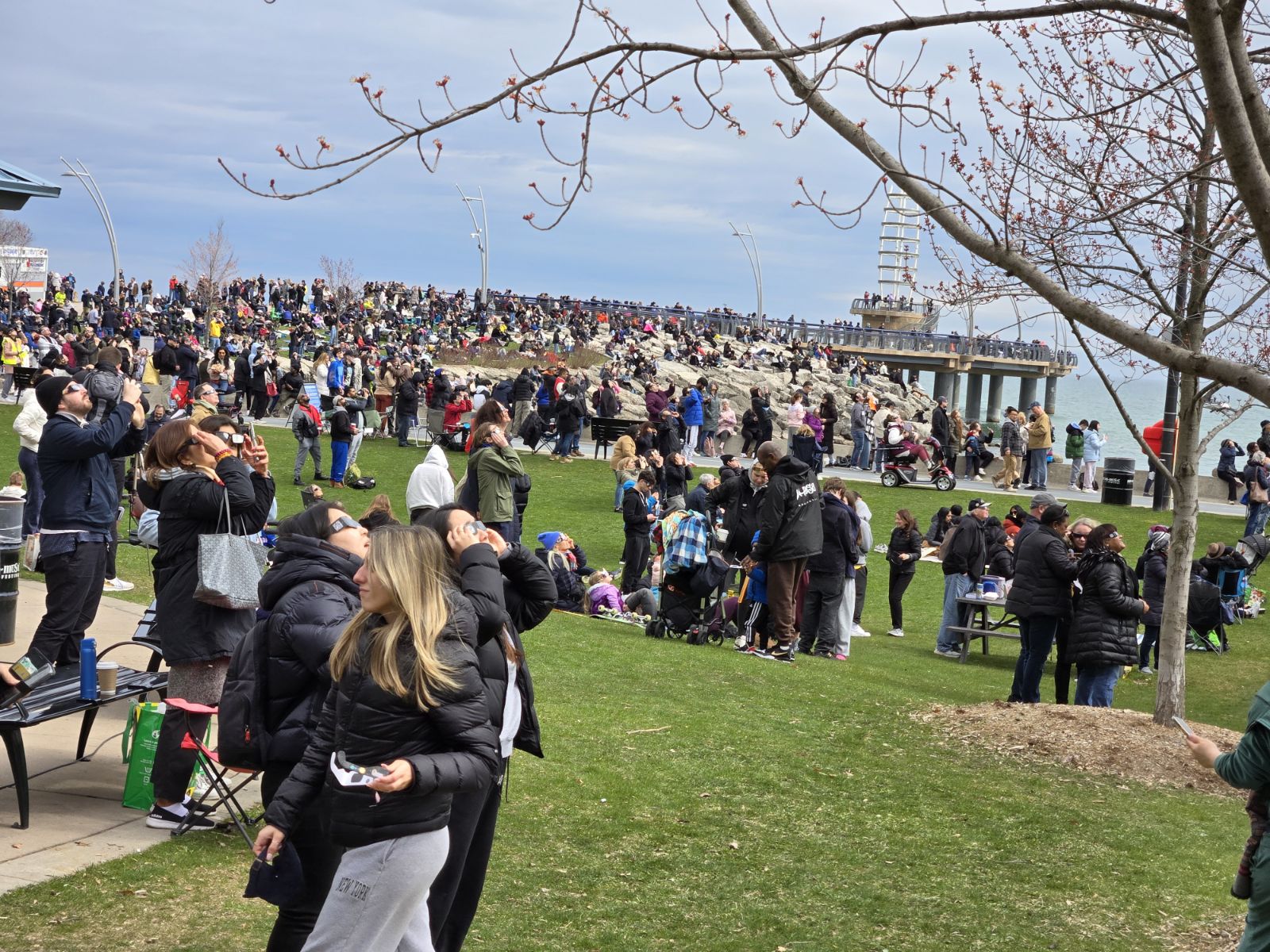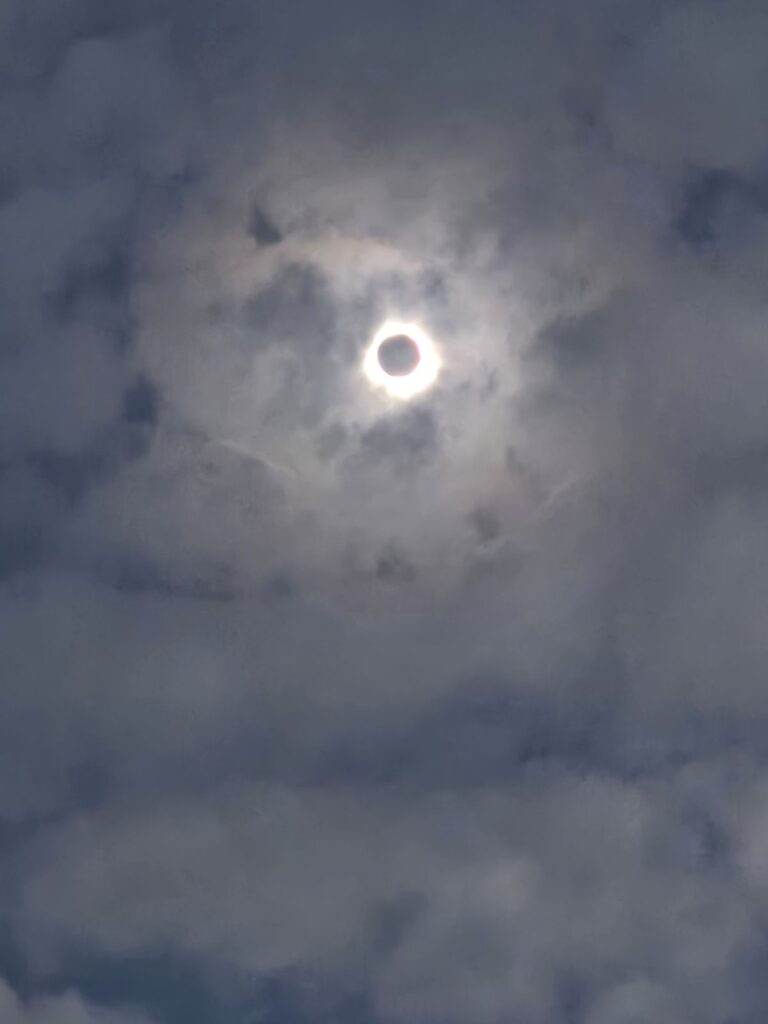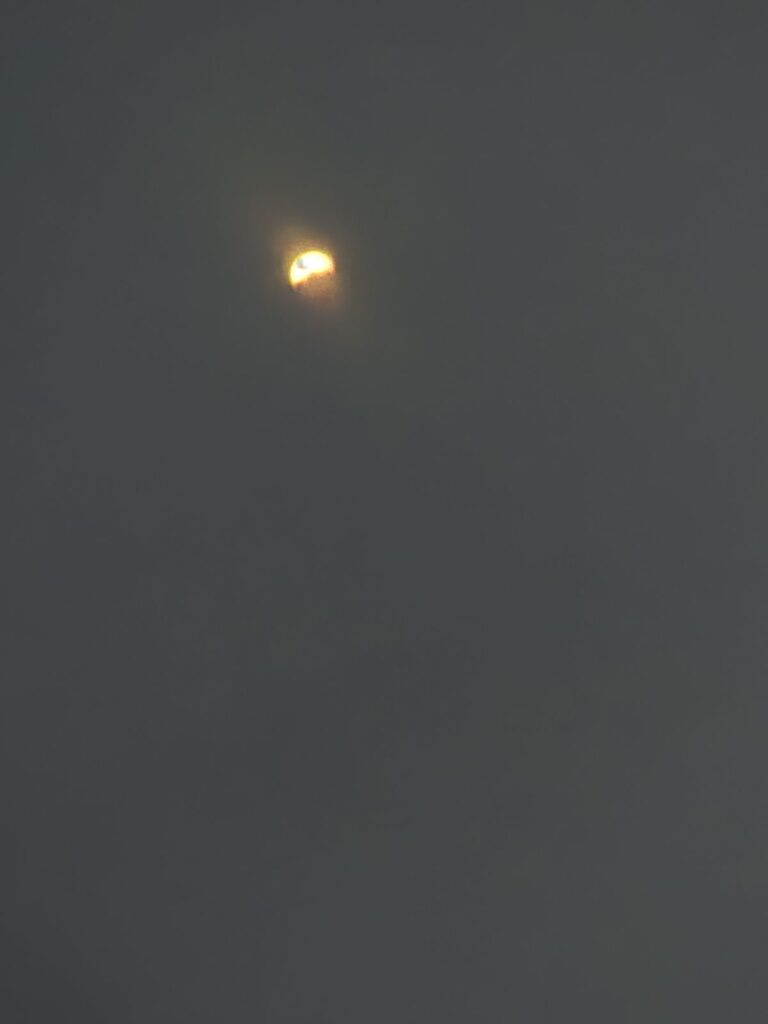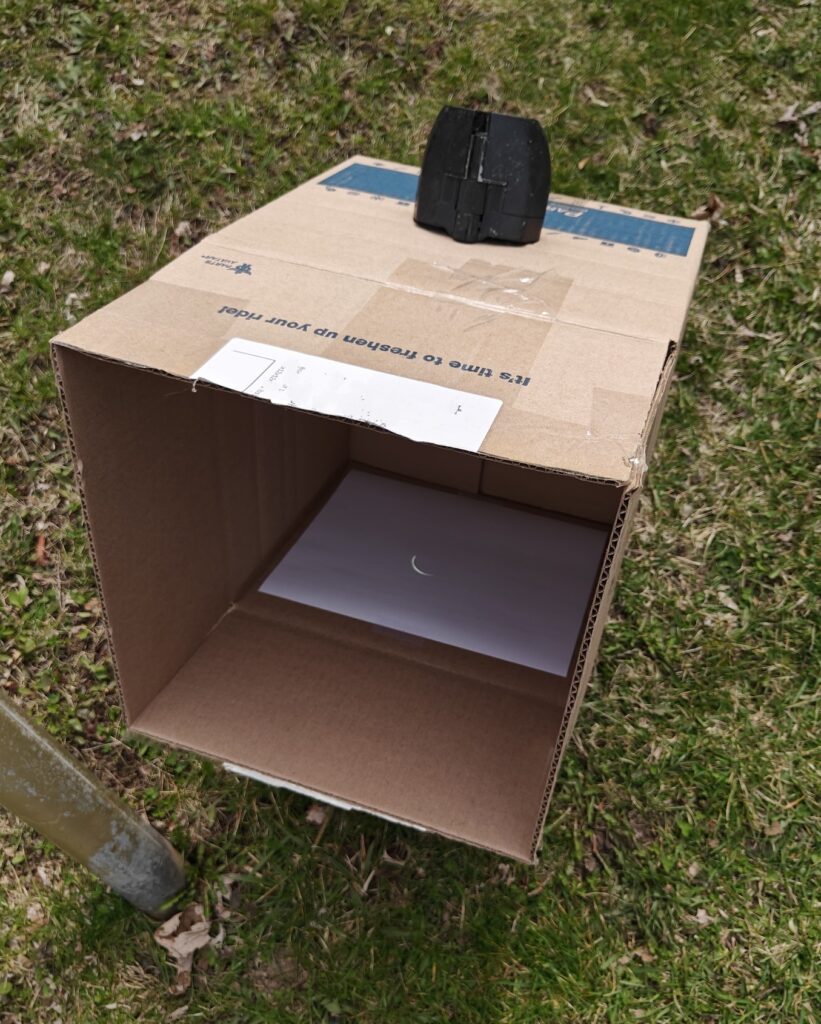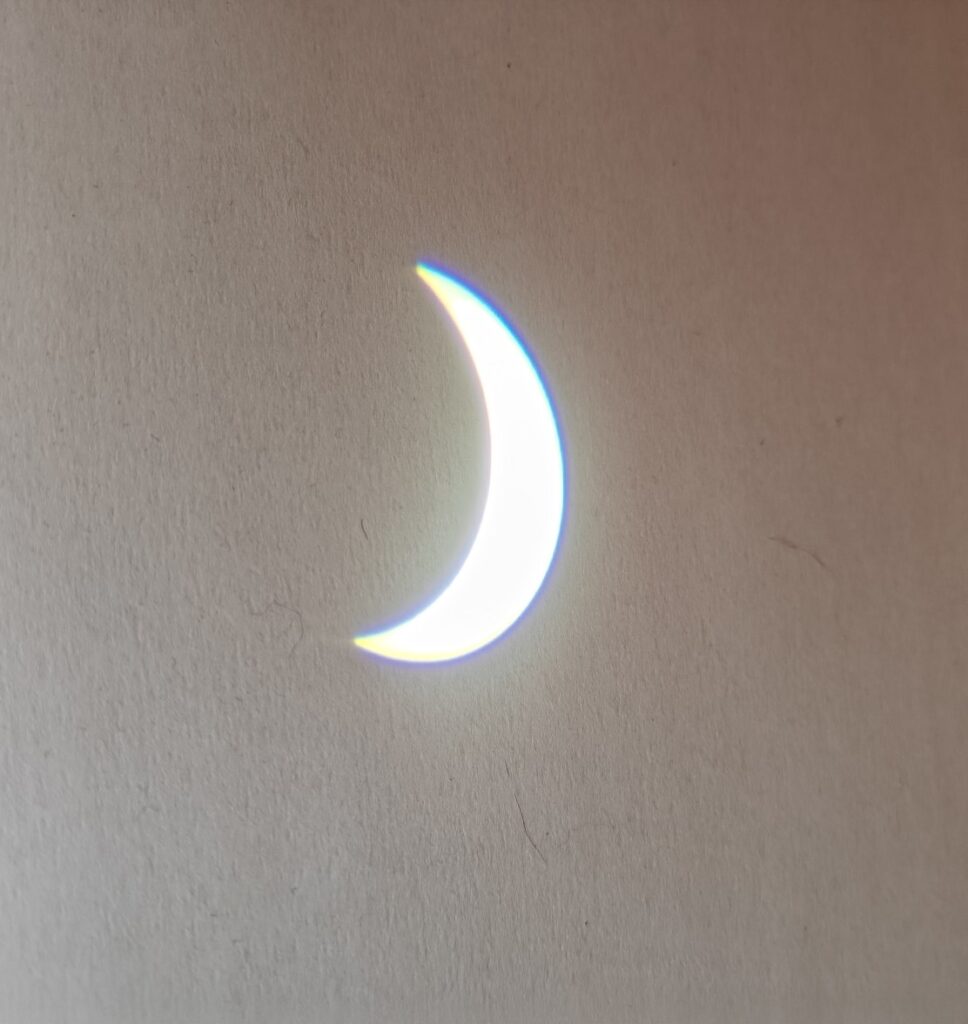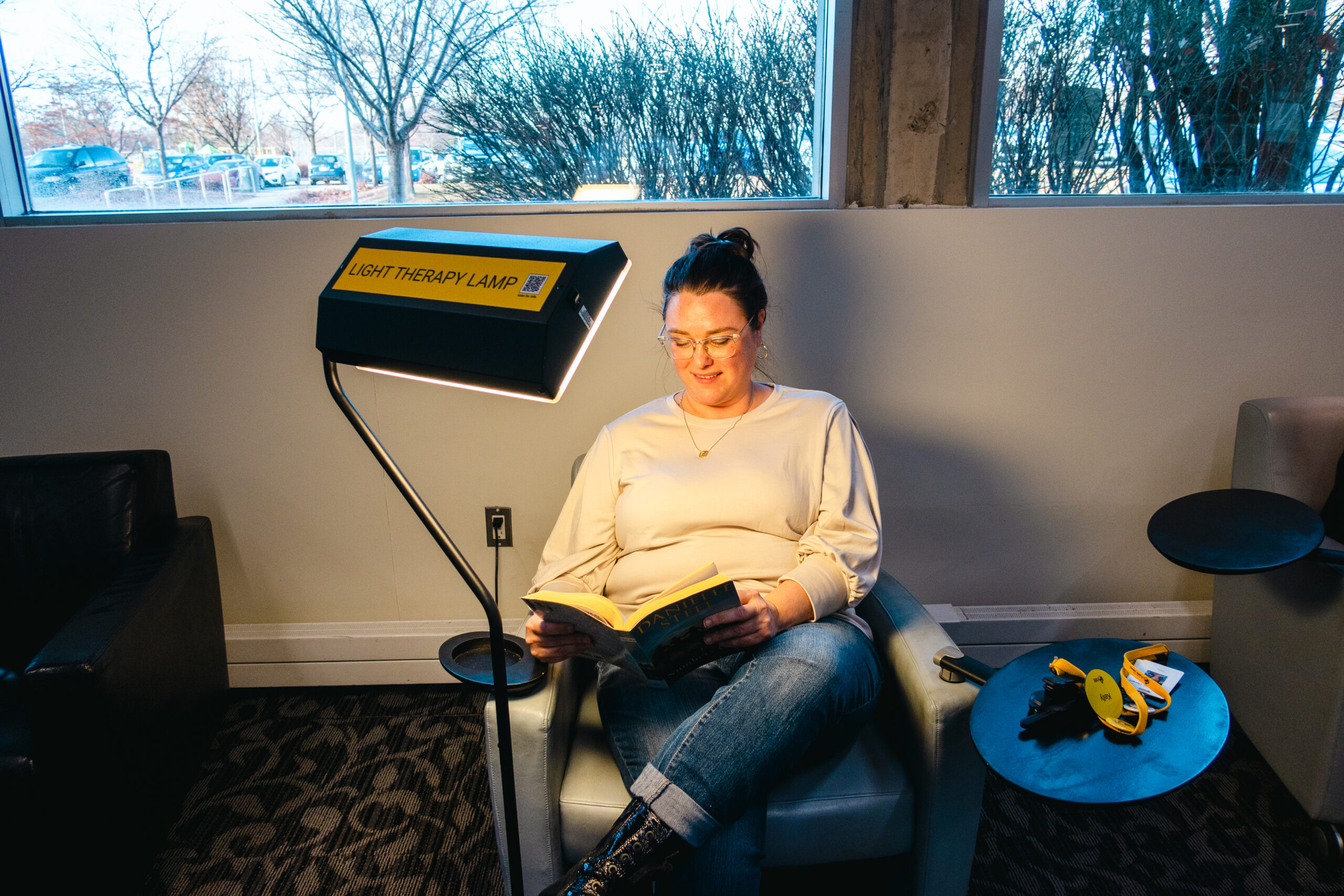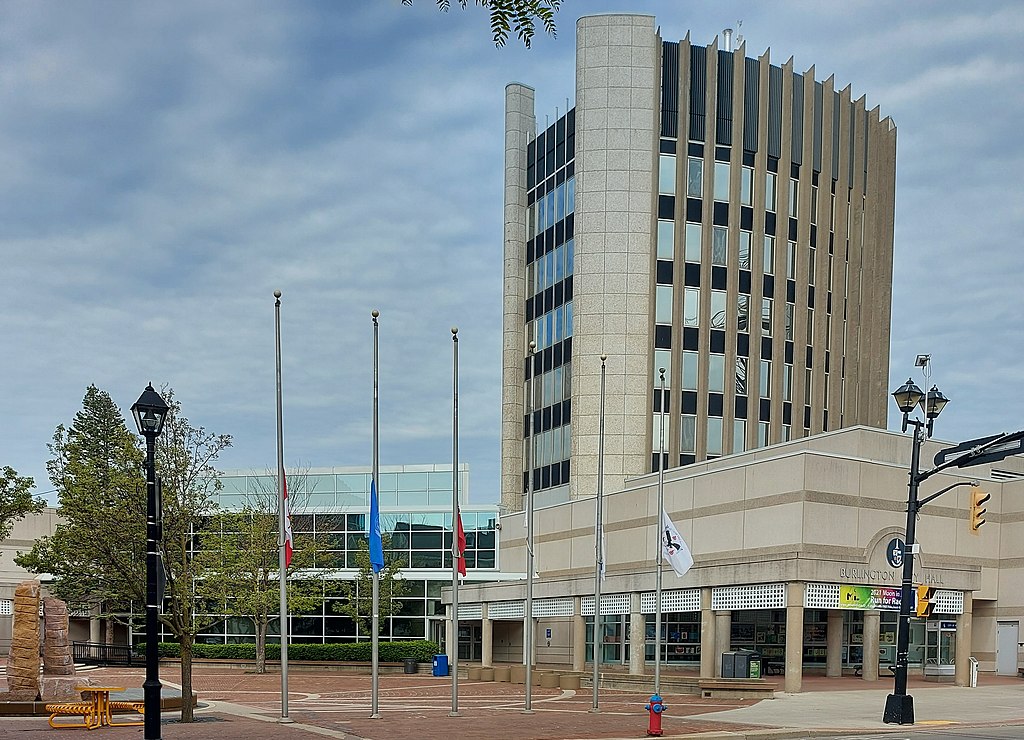Burlington residents packed onto the pier at Spencer Smith Park, spilling onto the rocks and grass to view today’s total solar eclipse.
Mayor Marianne Meed Ward and councillors were on hand to witness the rare event alongside the public. Eclipse glasses were handed out from 11 a.m. at the park, in a partnership between the city and McMaster University’s Department of Physics and Astronomy.
The monthly Committee of the Whole meeting was paused in order for the mayor and councillors to head down to Spencer Smith.
Said the mayor in a press release, “This is a rare natural marvel that is absolutely outstanding and indescribable with many of us never getting the chance to experience it — and this year, it’s in our backyard. We know that many members of our community will likely come down to Spencer Smith Park anyways to get as clear a view of the eclipse as possible and by having the city host an event there, we can also tie in some safety measures. Knowing how to properly protect yourself if you’re going to be outside during a total eclipse is very important in ensuring the safety of residents. I would like to thank our city staff for organizing this event and managing to secure tens of thousands of safety glasses for distribution so that we can experience the solar eclipse safely and together as a community.”
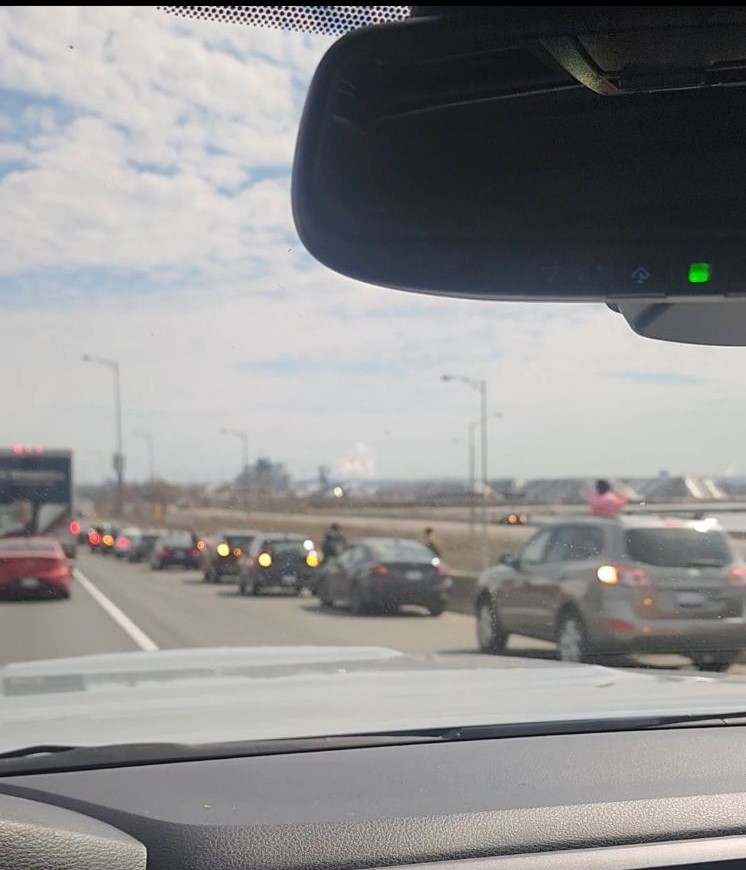
Meanwhile, over on the James N. Allan Skyway, people were pulling over on the bridge to get out and watch the phenomenon. Students attending Halton District School Board and Halton Catholic District School Board schools were at home today due to the eclipse, after an April 22 P.A. Day was rescheduled to April 8 to mitigate any potential transportation issues as the eclipse coincided with school dismissal timings.
While total solar eclipses occur approximately every 18 months, it is not often that a total eclipse is visible from any specific location on Earth. It will be another 20 years before another total solar eclipse will cross Canada; the Northwest Territories, Alberta, and slivers of Nunavut, B.C., and Saskatchewan will be on the path of totality in 2044.
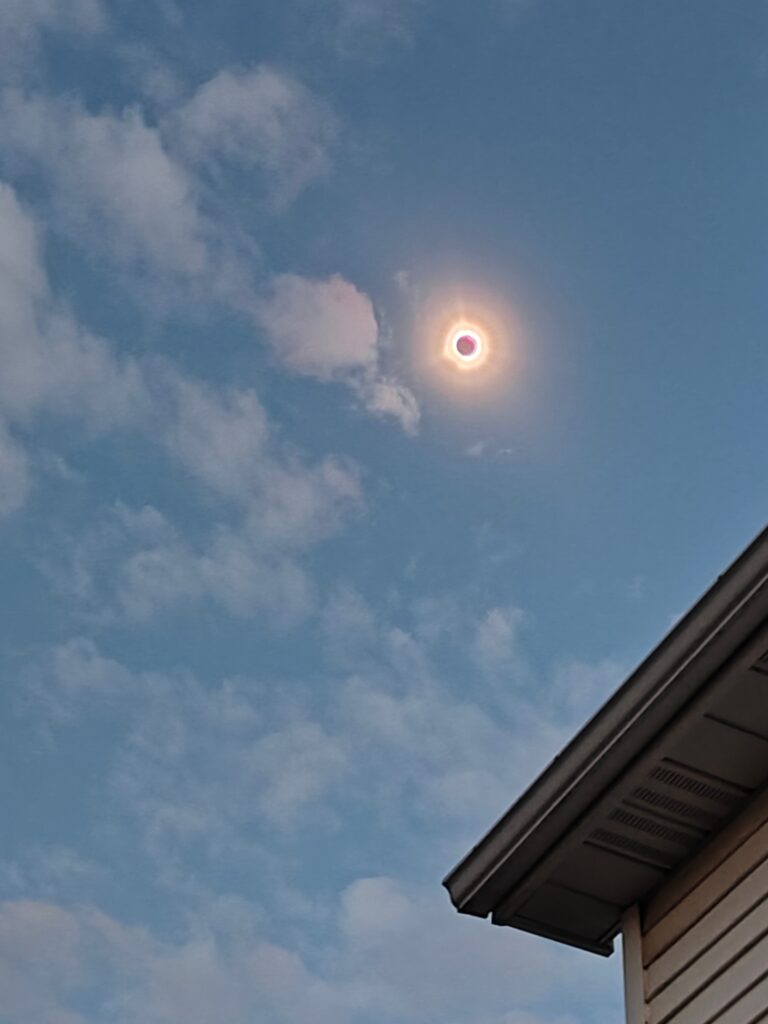
Sources:
Rao, J. 2017. Total solar eclipses: How often do they occur (and why)? Space.com. Url: https://www.space.com/25644-total-solar-eclipses-frequency-explained.html (accessed April 8, 2024).
Time and Date website. n.d. Total solar eclipse on Aug. 22–23, 2044: Path map and times. Url: https://www.timeanddate.com/eclipse/map/2044-august-23 (accessed April 8, 2024).

